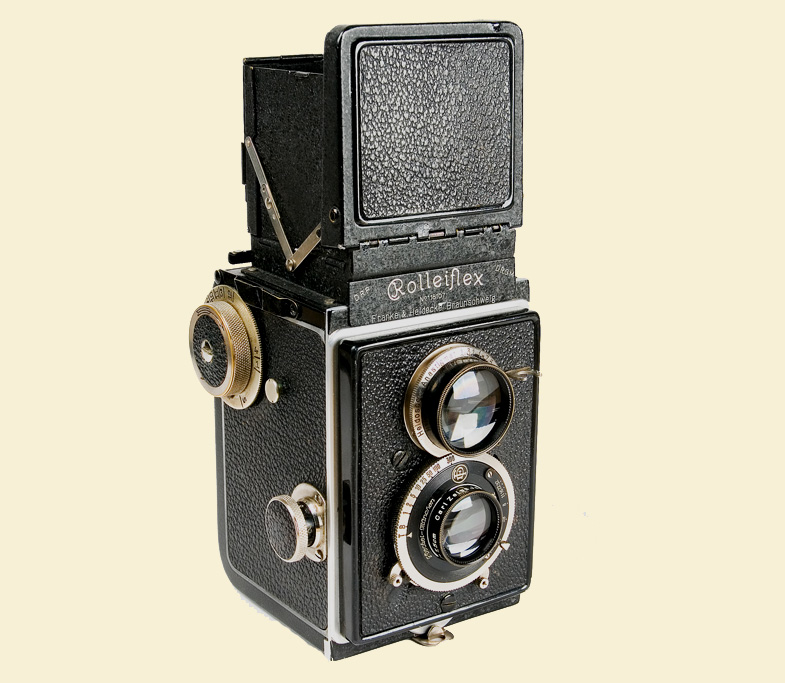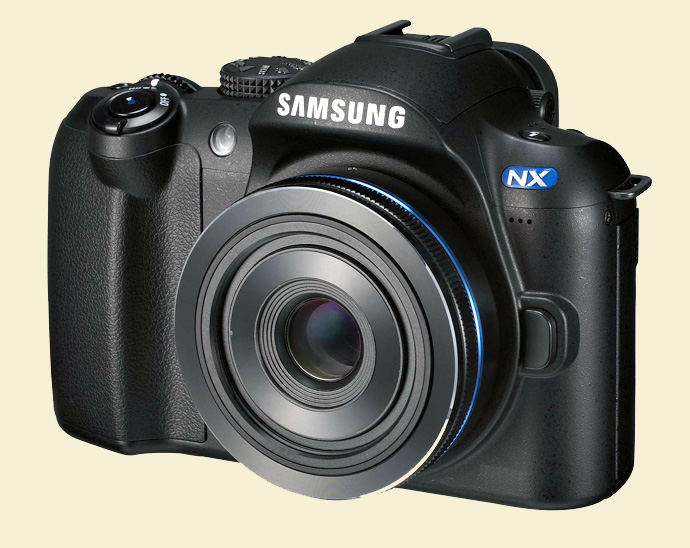
Well, no sooner had I posted the item below than word came of the Samsung NX, Samsung/Pentax's answering gun to Panasonic/Olympus's Micro 4/3—an interchangeable-lens but mirror-box-less compact camera that will have an APS-C size sensor (that is to say, as big as the sensor in most digital SLRs and much bigger than the ones in digital point-and-shoots, a.k.a. "consumer digicams").
Note that the NX is not yet a camera—it's semi-vaporware. The current announcement is essentially a promissory note from Samsung saying, "We're working on this." Despite which, a few tasty CAD renderings and some technical details fly very nicely at this PMA, which is starved for news.
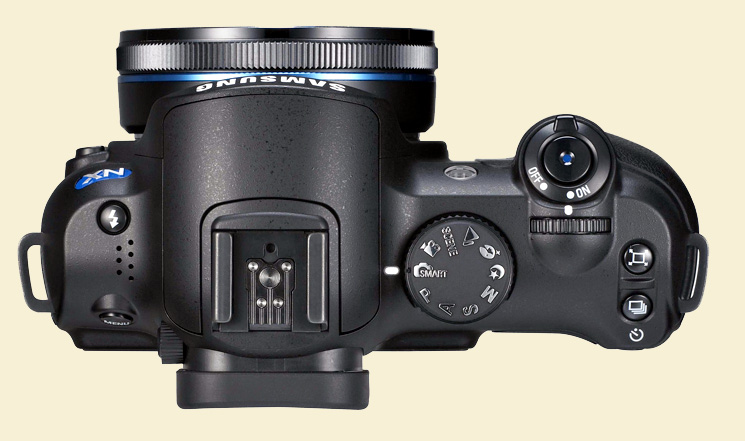
Looks nice, huh? Scale is hard to convey on a monitor, but look at that hot shoe for an indication of just how wee this'll be.
They're saying "second half of 2009," which is moved up from the original announcement of "sometime in 2010." Which I would take to mean: the G1 is selling nicely and we're rarin' to compete in this segment.
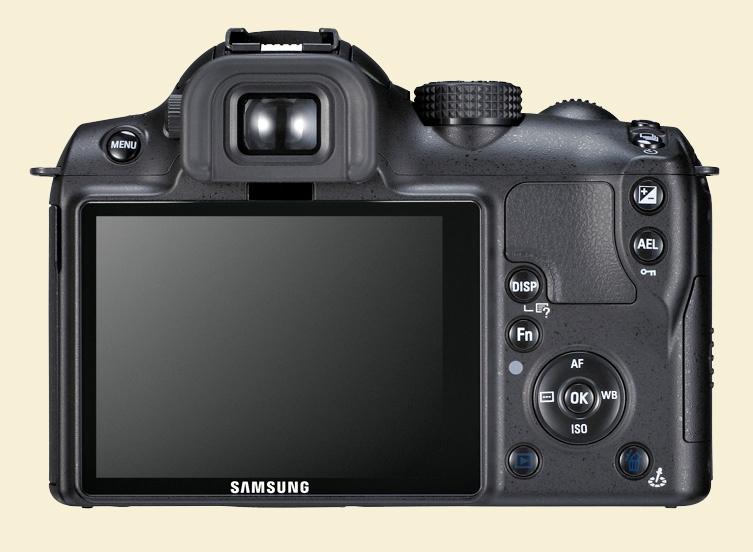
By the way, if anybody thinks Micro 4/3 and whatever this new category will end up being called (Micro APS-C?) won't take over the lower end of what is now the entry-level DSLR market, I respectfully suggest they think again. The mirror-box/prism assembly on any DSLR is a significant and relatively immutable part of the cost of manufacturing the hardware parts of a digital SLR, and substantial savings will be realized in manufacture if it can be replaced by the EVF / always-on Live View of the Micro-type cameras. This alone predicts at least a moderate success for this type of camera in its niche of the market.
And who knows, depending on how well the public groks the concept, they could take off. (They'll need a little better sensor than the one in the G1 if they're to do so, however.)
Mike
(Thanks to Ken White)
Send this post to a friend
ADDENDUM #1: There's been some speculation that the "Micro APS-C" camera from Samsung might have a Pentax K-mount. But don't forget the all-important dimension of flange distance—the distance from the mounting plate of the lens to the sensor or film surface. A lensmount is not just a spec for diameter, bayonet, electronic and/or mechanical communication, and fit; it also must specify flange distance. As should be obvious, a lens designed for a greater flange distance can be used on a camera specified for a shorter flange distance by using an adapter as a spacer to bridge the gap, but the opposite can't be true—you can't use a lens designed for a shorter flange distance on a camera designed for a longer one.
Any camera without a mirror-box that left room for the phantom mirror-box would be leaving half its advantage on the table. Thus, the new Samsung will almost certainly not be a K-mount camera, and its lenses will not be usable on K-mount cameras, in the same way that Micro 4/3 lenses cannot be used on regular 4/3 cameras. K-mount lenses will not be usable on it except (perhaps; we don't know yet) with an adapter.
ADDENDUM #2: I thought this might be pertinent here. No doubt you've seen this or something like it before, but here it is as a reminder.
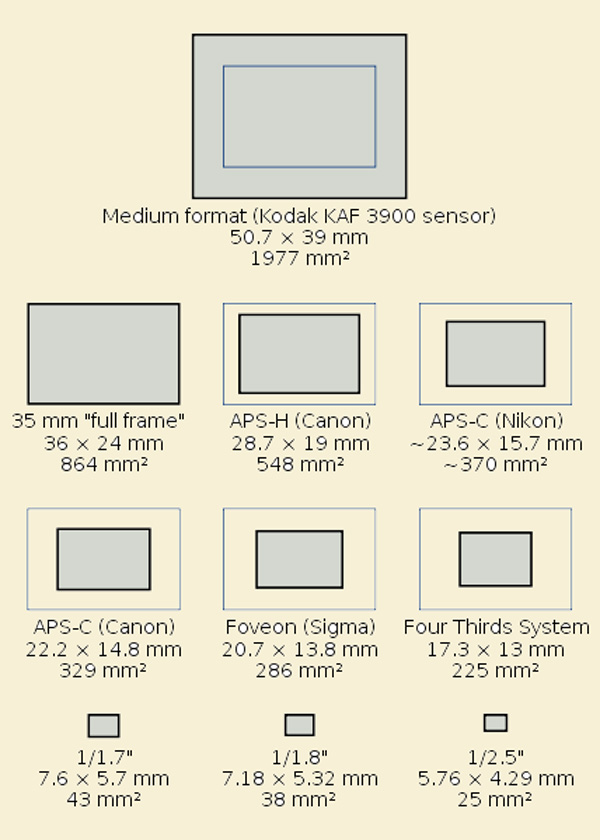
If you can, save this illustration and open it up on your computer at a size such that the"35mm 'full frame'" rectangle (and all the fine-rule rectangles surrounding the smaller sizes) is exactly 1 x 1.5 inches (24x36mm) on your monitor, and you'll be seeing all the sensor sizes at the correct scale.
It certainly gives you an indication of why the Four-Thirds System sensor in the Panasonic G1 might be preferable to, say, the 1/1.7" sensor in the Canon G10—it has over five times the area! —MJ
Source: Wikipedia.
